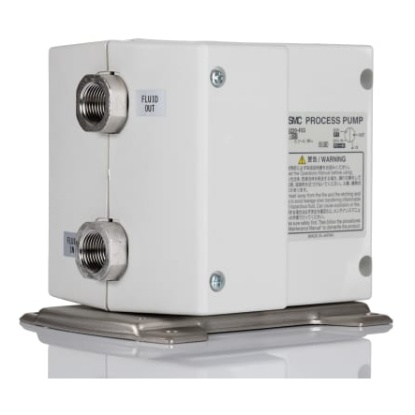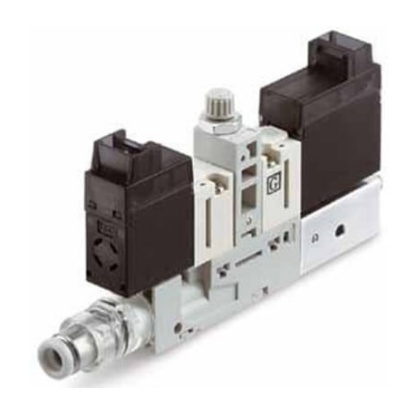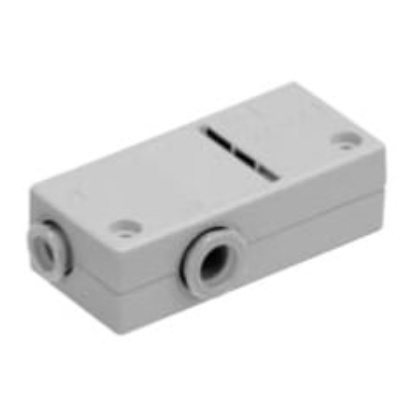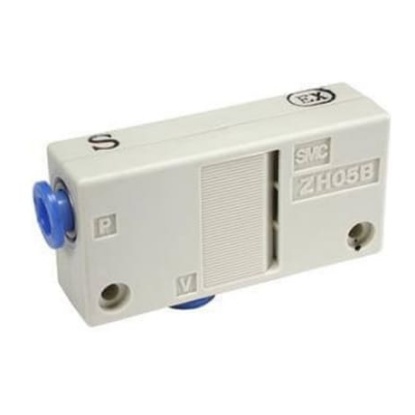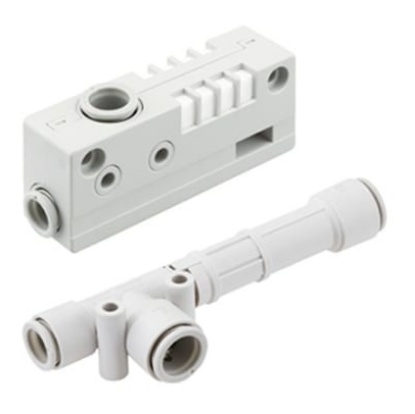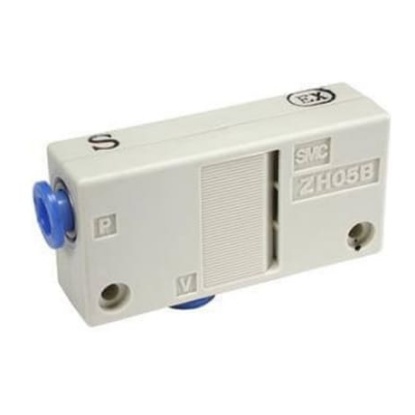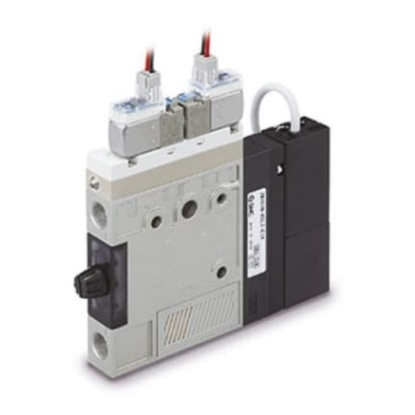Vacuum Generators
A vacuum generator, sometimes called a suction pump or ejector, is a pump that removes air and gas molecules from a sealed space, creating a partial vacuum, and can also transfer fluids between locations. Learn more in our comprehensive guide to vacuum pumps.
Vacuum pump devices are suitable for various processes requiring vacuums, such as engineering or manufacturing tasks, or for moving liquids similarly to conventional pumps. Some vacuum generators come with built-in exhaust silencers to minimize noise.
Types of Vacuum Generators
Vacuum can be created either pneumatically (ejectors) or electrically (pumps). Pneumatic vacuum generators offer short cycle times and are compact and lightweight for easy system integration. Ejectors provide energy-saving and process control features. Electrical vacuum generators are preferred when compressed air isn’t available or very high suction capacities are needed.
Momentum Transfer Pump – transfers air or gas from the inlet to the exhaust side of the pump.
Entrapment Pump – traps gases in a confined area, cooling and condensing them before removing them in solid form.
Positive Displacement Pump – features an expanding cavity on the suction side and a contracting cavity on the discharge side, moving a consistent volume each cycle. These are ideal for moderate flow and pressure applications, such as food manufacturing.
Diaphragm Pump – operates similarly to positive displacement pumps and is often used for precise fluid transfer tasks like filling and dispensing.
How to Choose a Vacuum Generator
Consider these factors before selecting a vacuum generator:
- Type of application and workpiece (porous or airtight)
- Energy efficiency—consider electricity and compressed air usage
- Size and weight limitations
- Cycle time requirements—ejectors offer short cycles
- Performance needs
Applications:
- Semiconductor processing
- Air conditioning systems
- Flight instrumentation
- Composite moulding
- Uranium enrichment
- Printing presses
- Medical equipment

